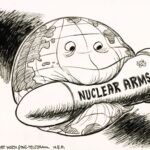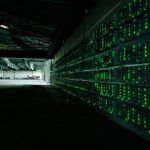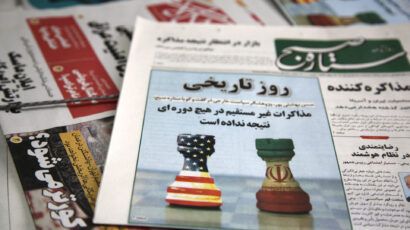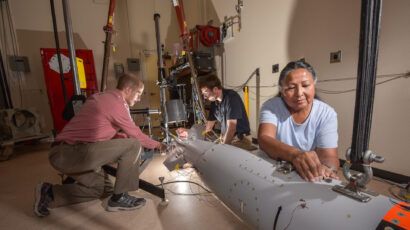Climate change and the Syrian uprising
By Shahrzad Mohtadi | August 16, 2012
Two days short of Egyptian leader Hosni Mubarak’s resignation, Al Jazeera published an article, headlined “A Kingdom of Silence,” that contended an uprising was unlikely in Syria. The article cited the country’s “popular president, dreaded security forces, and religious diversity” as reasons that the regime of Bashar al-Assad would not be challenged, despite the chaos and leadership changes already wrought by the so-called Arab Spring. Less than one month later, security forces arrested a group of schoolchildren in the Syrian city of Dara’a, the country’s southern agricultural hub, for scrawling anti-government slogans on city walls. Subsequent protests illustrated the chasm between the regime’s public image — encapsulated in the slogan “Unity, Freedom and Socialism” — and a reality of widespread public disillusion with Assad and his economic policies.
Among the many historical, political, and economic factors contributing to the Syrian uprising, one has been devastating to Syria, yet remains largely unnoticed by the outside world. That factor is the complex and subtle, yet powerful role that climate change has played in affecting the stability and longevity of the state.
The land now encompassed by Syria is widely credited as being the place where humans first experimented with agriculture and cattle herding, some 12,000 years ago. Today, the World Bank predicts the area will experience alarming effects of climate change, with the annual precipitation level shifting toward a permanently drier condition, increasing the severity and frequency of drought.
From 1900 until 2005, there were six droughts of significance in Syria; the average monthly level of winter precipitation during these dry periods was approximately one-third of normal. All but one of these droughts lasted only one season; the exception lasted two. Farming communities were thus able to withstand dry periods by falling back on government subsidies and secondary water resources. This most recent, the seventh drought, however, lasted from 2006 to 2010, an astounding four seasons — a true anomaly in the past century. Furthermore, the average level of precipitation in these four years was the lowest of any drought-ridden period in the last century.
While impossible to deem one instance of drought as a direct result of anthropogenic climate change, a 2011 report from the National Oceanic and Atmospheric Administration regarding this recent Syrian drought states: “Climate change from greenhouse gases explained roughly half the increased dryness of 1902-2010.” Martin Hoerling, the lead researcher of the study, explains: “The magnitude and frequency of the drying that has occurred is too great to be explained by natural variability alone. This is not encouraging news for a region that already experiences water stress, because it implies natural variability alone is unlikely to return the region’s climate to normal.” The Intergovernmental Panel on Climate Change predicts that global warming will induce droughts even more severe in this region in the coming decades.
It is estimated that the Syrian drought has displaced more than 1.5 million people; entire families of agricultural workers and small-scale farmers moved from the country’s breadbasket region in the northeast to urban peripheries of the south. The drought tipped the scale of an unbalanced agricultural system that was already feeling the weight of policy mismanagement and unsustainable environmental practices. Further, lack of contingency planning contributed to the inability of the system to cope with the aftermath of the drought. Decades of poorly planned agricultural policies now haunt Syria’s al-Assad regime.
An unsustainable history. Hafez al-Assad — the father of the current president, Bashar al-Assad — ruled Syria for three decades in a fairly non-religious and paradoxical way. To some degree, he modernized the nation’s economy and opened it to the outside world; at the same time, his regime was infamous for repression and the murder of citizens. The elder al-Assad relied on support from the rural masses to maintain his authority, and during his rule, the agricultural sector became one of the most important pillars of the economy. In a 1980 address to the nation, he said: “I am first and last — and of this I hope every Syrian citizen and every Arab outside of Syria will take cognizance — a peasant and the son of a peasant. To lie amidst the spikes of grain or on the threshing floor is, in my eyes, worth all the palaces in the world.” Hafez al-Assad assured the Syrian people of their right to food security and economic stability, granting subsidies to reduce the price of food, oil, and water. The regime emphasized food self-sufficiency, first achieved with wheat in the 1980s. Cotton, a water-intensive crop requiring irrigation, was heavily promoted as a “strategic crop,” at one point becoming Syria’s second-largest export, after oil. As agricultural production swelled, little to no attention was paid to the environmental effects of such short-term, unsustainable agricultural goals.
With a steadfast emphasis on quick agricultural and industrial advancements, the Baathist regime did little to promote the sustainable use of water. As Francesco Femia and Caitlin Werrell state: “The al-Assad regime has, by most accounts except their own, criminally combined mismanagement and neglect of Syria’s natural resources, which have contributed to water shortages and land desertification.” In the two decades before the current drought, the state invested heavily in irrigation systems — yet they remain underdeveloped, extremely inefficient, and insufficient. The majority of irrigation systems use groundwater as their main source, because the amount of water from rivers is inadequate. As of 2005, the government began requiring licenses to dig agricultural wells. There are claims that the regime wishes to keep the Kurdish-majority region in the northeast of the country underdeveloped and has denied licenses to some farmers in the region. Whatever the reasons, well licenses are generally difficult to obtain; as a result, more than half the country’s wells are dug illegally and are therefore unregulated. Groundwater reserves in the years leading up to the drought were rapidly depleted.
Unheeded warnings. In 2001, the World Bank warned, “The (Syrian) Government will need to recognize that achieving food security with respect to wheat and other cereals in the short-term as well as the encouragement of water-intensive cotton appear to be undermining Syria’s security over the long-term by depleting available groundwater resources.” With energy and water heavily subsidized by the state, farmers were further encouraged to increase production rather than set sustainable goals.
The price of wheat skyrocketed in 2005, and an overconfident Syrian government sold much of its emergency wheat reserve. In 2008, due to the drought, the Syrian government was forced to concede that its policy of self-sufficiency had failed, and for the first time in two decades it began importing wheat. Meanwhile, nearly 90 percent of the barley crop failed, doubling the price of animal feed in the first year of the drought alone. Small livestock herders in the northeast have lost 70 percent and more of their herds, and many have been forced to migrate. According to the UN Food and Agriculture Organization, one-fourth of the country’s herds were lost as a result of the drought.
In recent years, Assad’s promises of food security have vanished; the United Nations reports that the diet of 80 percent of those severely affected by the drought now consists largely of bread and sugared tea. For those who have remained in the nearly deserted rural communities of Syria’s northeast, food prices have skyrocketed, and 80 percent of residents in the drought-stricken regions are living under the poverty threshold. In 2003, agriculture accounted for one-fourth of Syria’s gross domestic product; in 2008, a year into the drought, that fraction was just 17 percent. The government’s drought management has been reactive, untimely, poorly coordinated, and poorly targeted, according to the UN Office for Disaster Risk Reduction.
The chaotic result. Since the drought began, temporary settlements composed largely of displaced rural people have formed on the outskirts of Damascus, Hama, Homs, Aleppo, and Dara’a — the latter city being the site of the first significant protest in the country in March 2011. This migration has exacerbated economic strains already caused by nearly two million refugees from neighboring Iraq and Palestine. A confidential cable from the American embassy in Damascus to the US State Department, written shortly after the drought began, warned of the unraveling social and economic fabric of Syria’s rural farming communities due to the drought. It noted that the mass migration “could act as a multiplier on social and economic pressures already at play and undermine stability in Syria.” Reporting during the uprising in late 2011, the late New York Times correspondent Anthony Shadid recounts: “There’s that sense of corruption in the society itself, that the society itself is falling apart, being pulled apart; that the countryside is miserable; that there’s nothing being done to make lives better there.” Reports show that the earliest points of unrest were those that were most economically devastated by the drought and served as migratory settlement points.
“The regime’s failure to put in place economic measures to alleviate the effects of drought was a critical driver in propelling such massive mobilizations of dissent,” concludes Suzanne Saleeby, a contributor to Jadaliyya, a digital magazine produced by the Arab Studies Institute. “In these recent months, Syrian cities have served as junctures where the grievances of displaced rural migrants and disenfranchised urban residents meet and come to question the very nature and distribution of power.”
The considerations that impel an individual to protest in streets that are known to be lined by armed security forces extend beyond an abstract desire for democracy. Only a sense of extreme desperation and hopelessness can constitute the need — rather than a mere desire — to bring change to a country’s economic, political, and social systems. A combination of stress factors resulting from policies of economic liberalization — including growing income disparities and the geographic limitations of the economic reforms — shattered the Syrian regime’s projected image of stability. Even if it was not the leading cause of the Syrian rebellion, the drought and resulting migration played an important role in triggering the civil unrest now underway in Syria.
The drought in Syria is one of the first modern events in which a climactic anomaly resulted in mass migration and contributed to state instability. This is a lesson and a warning for the greater catalyst that climate change will become in a region already under the strains of cultural polarity, political repression, and economic inequity.
Editor’s note: This article was modified on August 19, 2012.
Together, we make the world safer.
The Bulletin elevates expert voices above the noise. But as an independent nonprofit organization, our operations depend on the support of readers like you. Help us continue to deliver quality journalism that holds leaders accountable. Your support of our work at any level is important. In return, we promise our coverage will be understandable, influential, vigilant, solution-oriented, and fair-minded. Together we can make a difference.
Topics: Climate Change, Opinion














